If you’ve ever admired the giant, spiky green fruits hanging from tropical trees in Southeast Asia or Caribbean markets, chances are you’ve seen a jackfruit. Known as the largest tree-borne fruit in the world, jackfruit (Artocarpus heterophyllus) is a unique tropical delicacy loved for its sweet, fruity flavor and versatility in both savory and sweet dishes.
The good news? If you have a large garden in a warm climate, you can grow your own jackfruit tree and enjoy homegrown harvests of these exotic fruits. In this article, we’ll walk you through how to grow jackfruit in a large garden — covering everything from choosing a planting site to harvesting those enormous, honey-scented fruits.
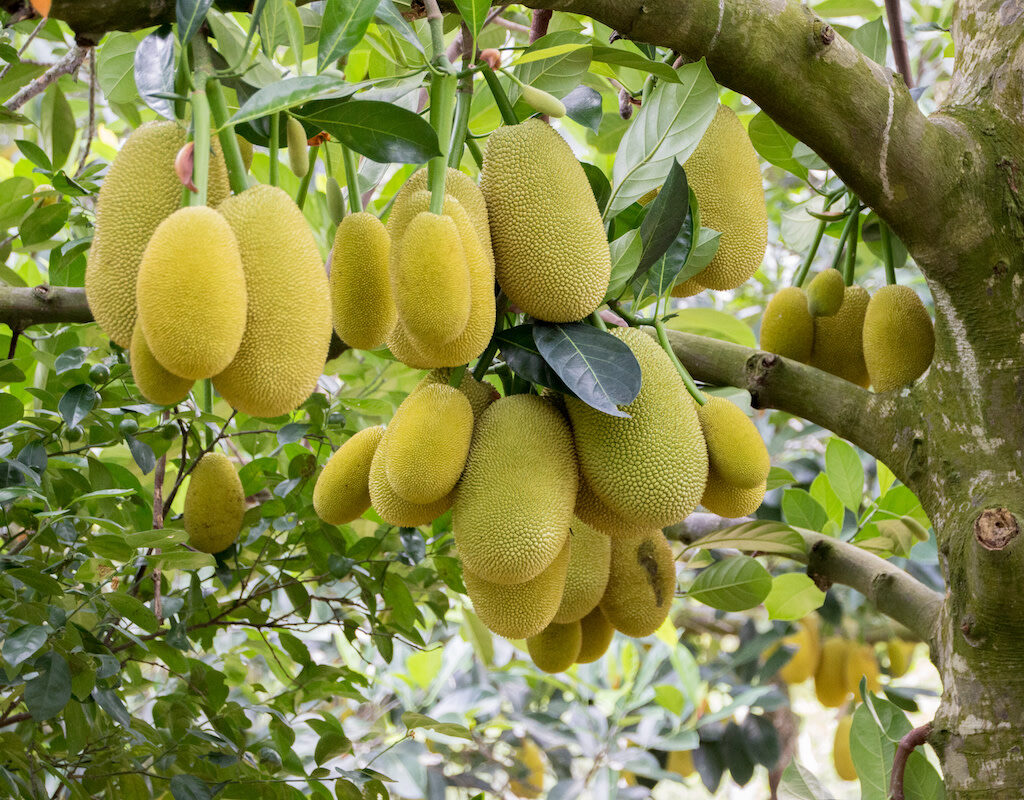
What is Jackfruit?
Jackfruit is a fast-growing, evergreen tropical tree native to South and Southeast Asia. It belongs to the fig and mulberry family (Moraceae) and produces massive fruits that can weigh anywhere from 10 to 80 pounds (or more!).
The flesh inside ranges from sweet and fragrant when ripe to mild and starchy when unripe, making it a popular ingredient in both curries and desserts. Unripe jackfruit is even used as a meat substitute in vegetarian recipes.
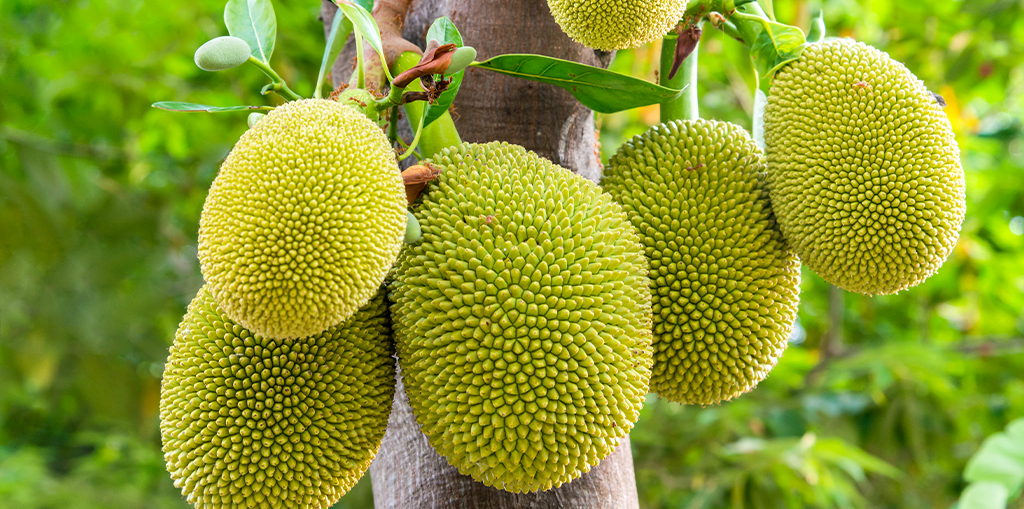
Can You Grow Jackfruit at Home?
Yes — if you live in a tropical or subtropical region, or can simulate those conditions in a greenhouse or protected area, you can successfully grow jackfruit in your own garden.
Ideal growing conditions:
- USDA Hardiness Zones: 10-12
- Temperature range: 70°F to 90°F (21°C to 32°C)
- Cannot tolerate frost or prolonged cold temperatures
In regions like South Florida, Southern Texas, Hawaii, and parts of California, jackfruit can thrive outdoors year-round.
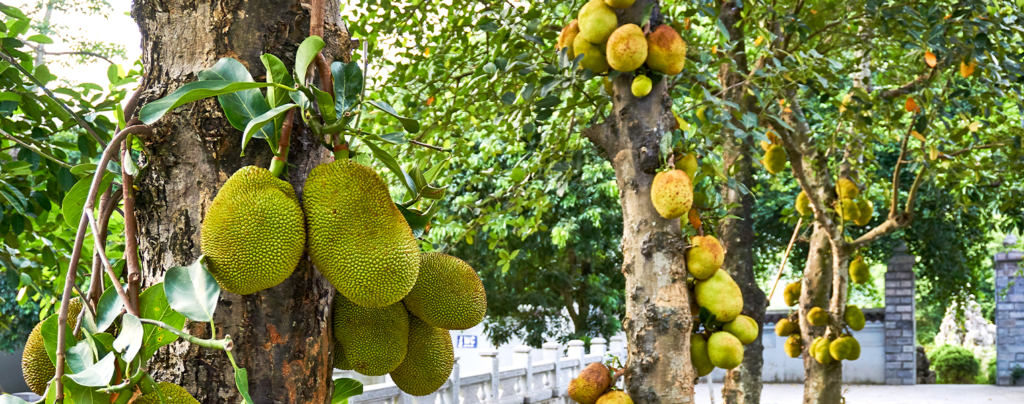
When to Plant Jackfruit
The best time to plant jackfruit is during the late spring or early summer when temperatures are consistently warm, and the risk of frost has passed. Planting during the rainy season can also give your young tree a helpful boost.
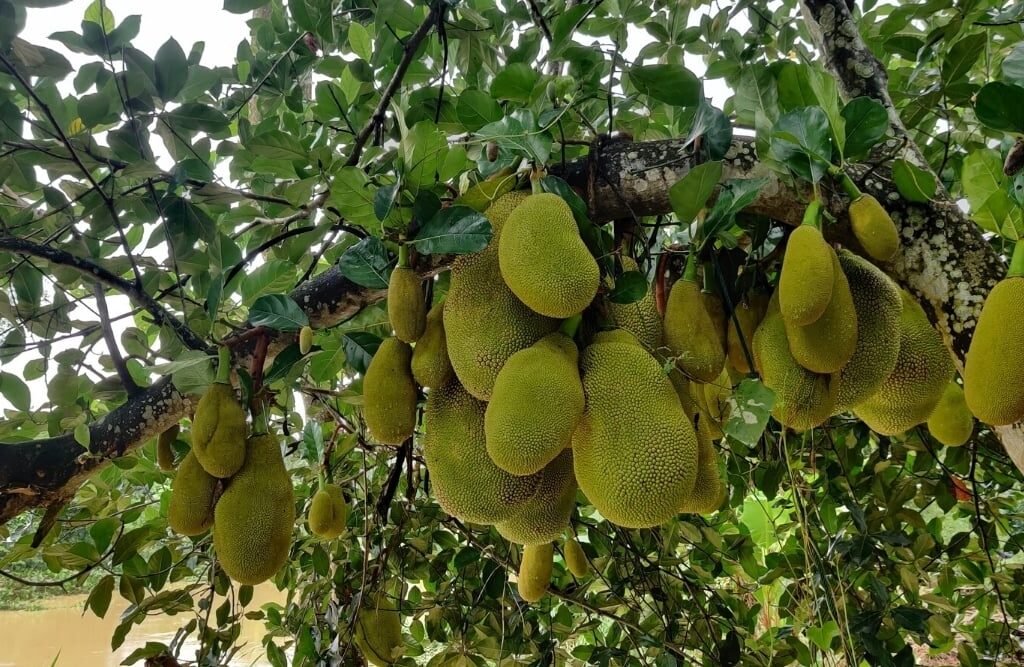
How to Plant Jackfruit in a Large Garden
1. Choose a Suitable Location
Jackfruit trees grow large and wide, typically reaching 30–70 feet tall and spreading out 20–50 feet.
Key location requirements:
- Full sun exposure (6–8+ hours daily)
- Sheltered from strong winds
- Well-draining soil (jackfruit hates waterlogged roots)
Avoid areas prone to flooding or heavy clay soil. Sandy loam or organically enriched soils work best.
2. Prepare the Soil
Jackfruit trees prefer soil with a pH of 6.0–7.5.
Soil preparation tips:
- Mix organic compost or well-rotted manure into the soil
- Add a balanced slow-release fertilizer (10-10-10)
- Dig a planting hole twice as wide and deep as the root ball
3. Planting the Tree
- Carefully remove the tree from its container, preserving the root ball.
- Position it in the hole so the root collar is level with the surrounding soil.
- Backfill with amended soil, gently firming it in to remove air pockets.
- Water thoroughly after planting.
Spacing: Plant jackfruit trees 30–50 feet away from other trees, buildings, and structures to accommodate its wide canopy and large root system.
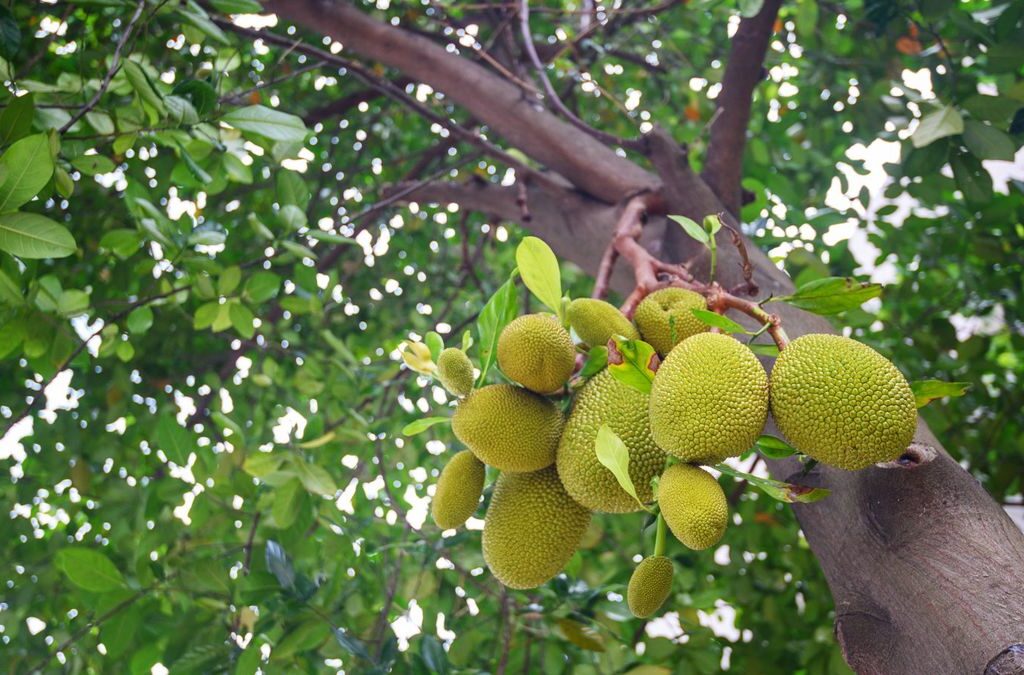
Watering and Fertilizing
Watering
Consistent moisture is crucial, especially for young jackfruit trees.
- Water 2–3 times per week for the first year
- Once established, water deeply once a week during dry spells
- Avoid overwatering to prevent root rot
Tip: Mulch around the base with 2–4 inches of organic mulch to retain soil moisture and suppress weeds.
Fertilizing
Jackfruit trees are heavy feeders.
Fertilizer schedule:
- Apply a balanced (10-10-10) fertilizer every 6–8 weeks during active growth.
- Increase to a higher potassium formula (like 8-3-9) as the tree matures and begins fruiting.
- Supplement with compost or aged manure annually in spring.
Pruning and Maintenance
While jackfruit trees are relatively low-maintenance, annual pruning helps keep them healthy, productive, and manageable.
When and how to prune:
- Prune after the first growing season to establish a strong central leader.
- Remove dead, weak, or overcrowded branches.
- Maintain a height of 15–20 feet for easier care and harvesting in home gardens.
Tip: Train your jackfruit tree to have 3–4 strong primary branches for a balanced, open canopy.
Common Pests and Diseases
Though hardy, jackfruit trees may encounter pests and diseases in tropical environments.
| Pest/Disease | Symptoms | Control |
|---|---|---|
| Fruit flies | Maggots in ripening fruit | Use traps, harvest early |
| Aphids | Sticky leaves, curled foliage | Neem oil or insecticidal soap |
| Mealybugs | White cottony masses on branches | Prune infested areas, neem oil |
| Leaf spot fungi | Dark spots on leaves | Copper-based fungicide |
Good sanitation, proper spacing, and removing fallen fruit can significantly reduce pest and disease problems.
Flowering and Pollination
Jackfruit trees typically bloom within 3–5 years from planting if grown from seed or 2–3 years for grafted trees.
Pollination tips:
- Jackfruit trees produce both male and female flowers on the same tree.
- Pollination is mostly wind and insect-driven, though hand pollination improves fruit set in small gardens.
- Hand pollinate by gently brushing pollen from male flowers onto female flowers in the morning.
Harvesting Jackfruit
Time to maturity:
- 3–5 years after planting from seed
- 2–3 years from grafted trees
When to harvest:
- Fruit color changes from green to light yellowish-green.
- Dull, hollow sound when tapped.
- Aroma becomes sweet and fruity.
- Small spines flatten as the fruit ripens.
How to harvest:
- Use a sharp knife or saw to cut the fruit, leaving a 2–3 inch stem attached.
- Wear gloves — jackfruit sap is sticky!
How to Use and Store Jackfruit
Culinary uses:
- Unripe jackfruit: Used in curries, stir-fries, and as a vegan “pulled pork” substitute.
- Ripe jackfruit: Eaten fresh, blended into smoothies, desserts, ice creams, and candies.
Storage tips:
- Whole fruits can be stored at room temperature for 3–5 days.
- Refrigerate cut jackfruit for up to 7 days.
- Freeze pulp for up to 2 months for later use.
Health Benefits of Jackfruit
Jackfruit isn’t just delicious — it’s packed with nutrients:
- Rich in vitamin C and antioxidants
- High in potassium for heart health
- Good source of fiber for digestion
- Contains beneficial plant compounds like carotenoids and flavonoids
Quick Growing Tips
Plant in full sun with ample space
Keep soil consistently moist but well-drained
Fertilize regularly with balanced and potassium-rich fertilizers
Prune annually for a manageable shape and airflow
Control pests with organic sprays and good garden hygiene
Harvest fruits when fully mature, based on color, sound, and aroma
Final Thoughts
Growing jackfruit in a large garden is a deeply rewarding experience for home gardeners with a love for tropical flavors and impressive, eye-catching trees. With the right care, patience, and space, you can enjoy massive, honey-scented fruits right from your own backyard.
So if you live in a warm region and have a spacious garden, why not give this tropical giant a try? It might just become the centerpiece of your garden paradise.

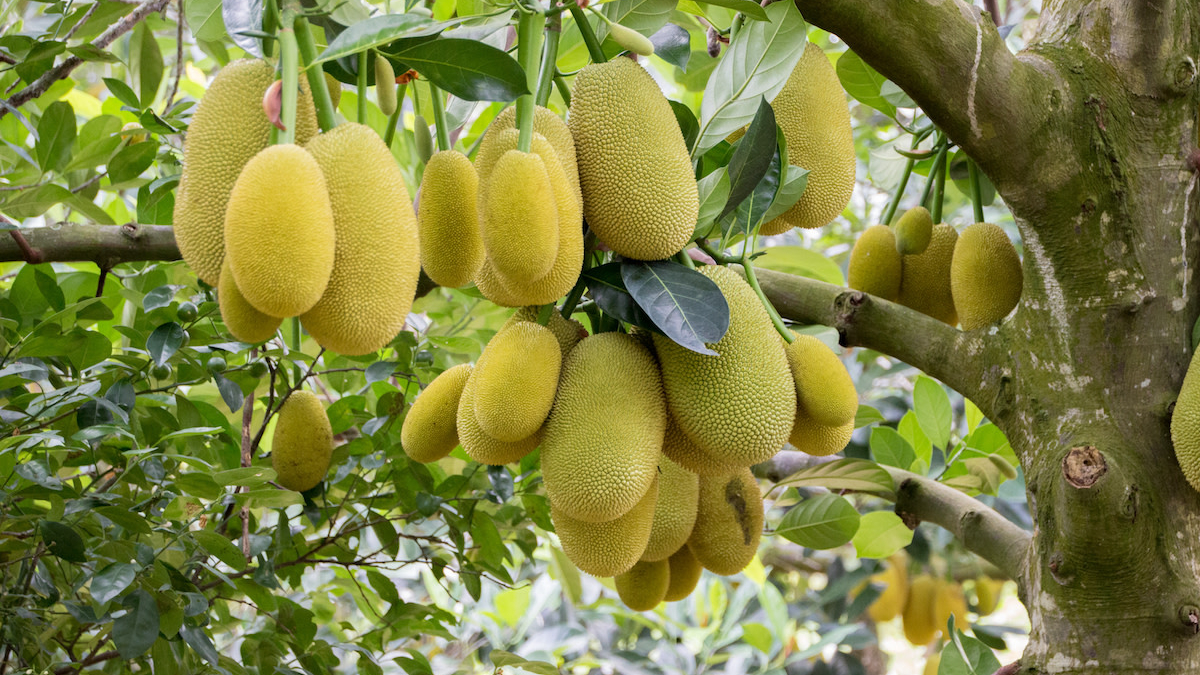




Leave A Comment